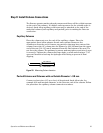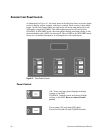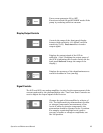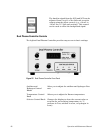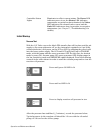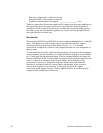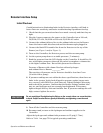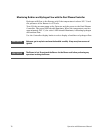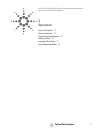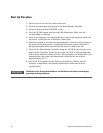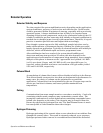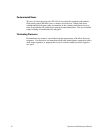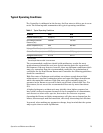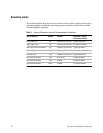
Operation and Maintenance Manual 69
Detector Interface Setup
Initial Checkout
Careful attention to eliminating leaks in the Detector interface will lead to
better Detector sensitivity and easier troubleshooting if problems develop.
1 Check that the gas connections have been made correctly and that they are
tight.
2 Plug the 3-prong connector for power on the Controller into a 100-volt,
50/60 Hz, 115-volt, 50/60-Hz or 230-volt, 50/60 Hz AC outlet.
3 Connect the oxidant delivery line to the oxidant inlet nut on the Burner.
Leave the heater cable disconnected and the thermocouple plugged in.
4 Connect the black PFA transfer line from the Detector to the top of the
Burner (see Figure 1 and/or Figure 2).
5 Turn on the Controller, the Detector power, and the vacuum pump.
6 Let the system pump down to a stable pressure (
~
5 minutes).
7 Read the pressure from the LCD display on the Controller. It should be <30
torr, with higher pressures observed for packed or megabore columns due
to the higher column flow. Record this pressure for reference.
Pressure of Burner with column flow but without hydrogen
and oxidant flow to Burner:_________ torr
The reaction cell pressure on the Detector should be less than 5 torr
(10 with oil-free pump).
8 If pressure readings are not within the above specifications, then there are
leaks in the system. Leak check all positive pressure points (swage nuts,
tees, crosses) with SNOOP or a leak Detector. Tighten fittings if necessary
and recheck the pressure. Confirm that the Burner fittings (oxidant inlet
nut, tee, and hydrogen nut) are strongly hand-tightened. If necessary,
tighten the gas delivery lines and transfer line. If pressure readings are still
high, contact Agilent for service.
9 Turn off the Controller and the vacuum pump.
10 Reconnect and/or turn on the hydrogen and oxidant supplies to the
Controller.
Adjust the hydrogen and oxidant inlet pressures to 25 psig (1.7 bar).
Refer to Table 1 on page 75 for typical operating conditions.
WARNING
Do not overtighten! Overtightening the fittings on the ceramic tubes can cause the tubes
to break. Vespel ferrules that are greatly distorted by overtightening cannot be used
again.



